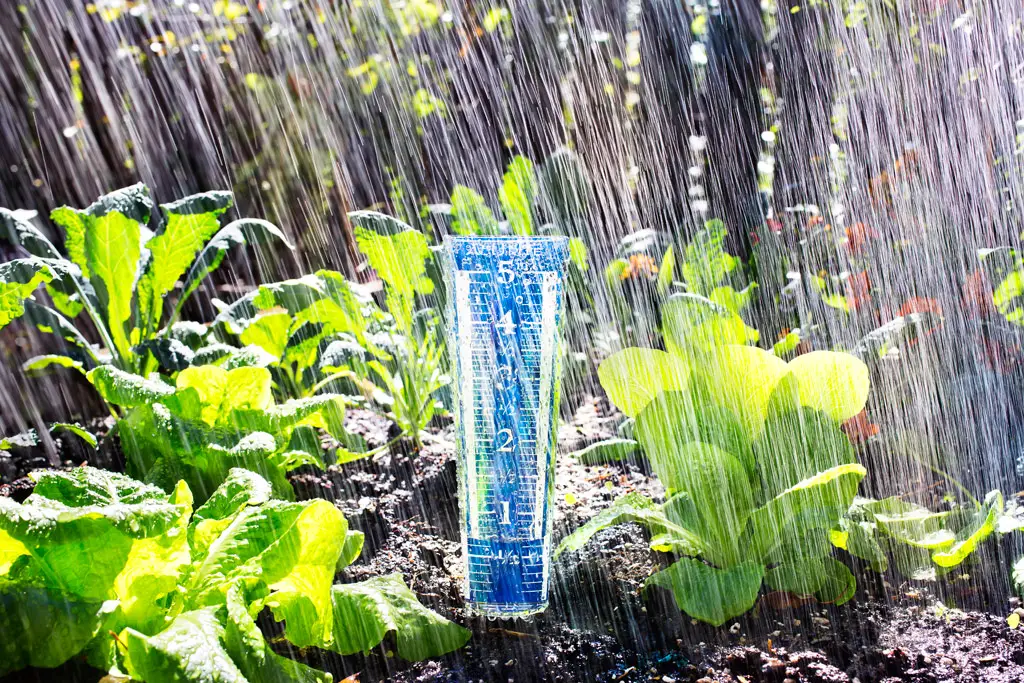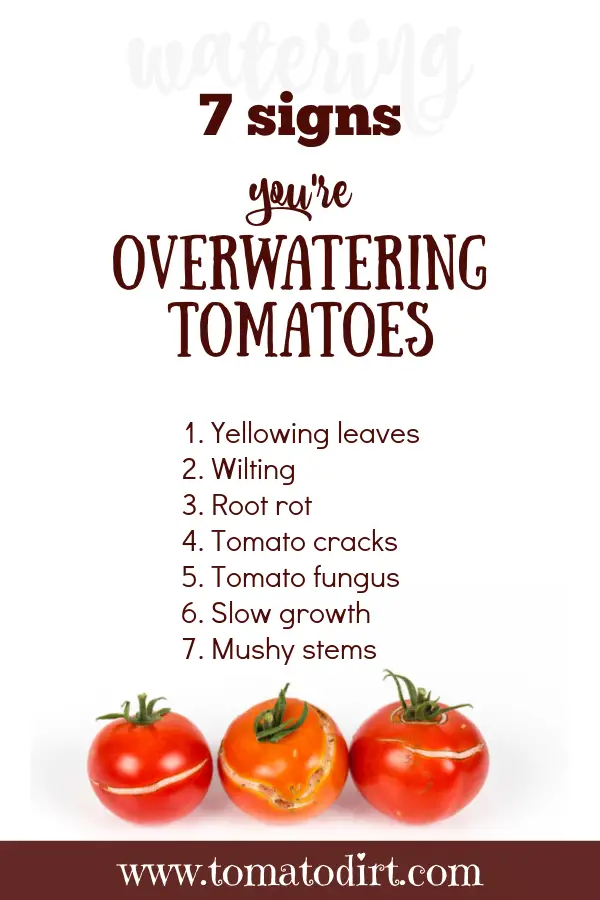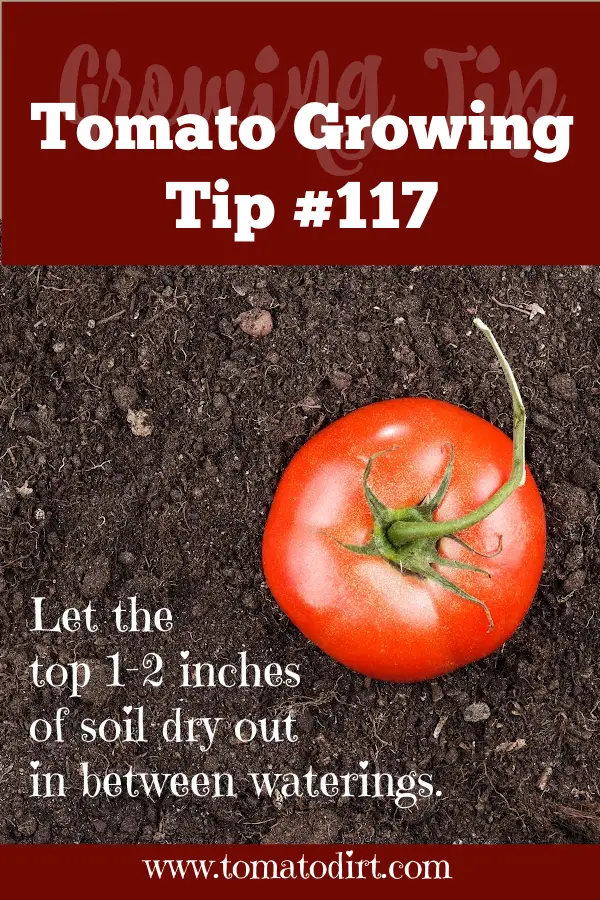“Am I Watering Tomatoes Enough?”
Since 2010, Tomato Dirt has garnered 4.8+ million views, making it the web’s leading online source for growing tomatoes in the home garden. Award-winning writer and Tomato Dirt owner Kathy Widenhouse has helped thousands of home gardeners grow healthier tomatoes. Be one of them when you get Tomato Dirt’s Growing Guide here.
Updated 7.19.25
How do you know if you’re watering tomatoes enough? Your tomato plants need 1-3 inches of water a week. But the water goes into the ground. And once it disappears, there is no way to measure it.
Plus overwatering tomatoes can be just as deadly and under-watering them. So how can you know that you’re giving plants enough water … or too much?
Signs that you’re not watering tomatoes enough
If you're not watering your tomato plants enough, they’ll tell you by shouting “stress!" Here are the most common isigns of underwatering in tomatoes:
1. Wilting leaves
Your tomato plant’s leaves droop or appear limp—especially in the morning and evening, not just during midday heat. If they don’t perk up after watering, it’s a strong sign of chronic underwatering.
2. Dry, brittle leaves
Leaf edges or whole leaves may turn crispy, dry, or brown, especially on lower parts of the plant. Brittle leaves show dehydration at the tissue level – a much more severe thrist than a temporary droop.
3. Curling leaves
A tomato plant curls its leaves upward to conserve moisture. It’s a survival response – one that you want to heed right away.
4. Slow growth
Underwatered tomatoes grow very slowly or stall completely. New leaves and flowers may be small or absent. Ditto with fruit.
5. Blossom drop or no fruit
It’s true that heat, on its own, leads to blossom drop. As does water stress. Flower buds fall off or simply do not form fruit after they blooms. And if fruit does form, it may be small, dry, or cracked.
6. Dry soil
Is your garden soil dry, crumbly, and pulling away from the edges of the bed? Maybe there are cracks on the garden surface. If you’re growing tomatoes in pots, lift the container. If it feels light, the entire root ball may have dried out. These signs tell you that plants need water.
If you notice one or more of these symptoms regularly, increase your watering frequency or volume. Just don’t overcorrect—soggy soil brings its own problems (like root rot or fungal disease ... see below). Aim for deep, consistent watering, keeping the soil evenly moist but not waterlogged.
Tips to help you make sure you’re watering
tomatoes enough
1. Monitor rainfall. Keep tabs on how much rain you get and how often. That will help you know how much extra water you need to give plants. Get a rain gauge to help you measure rainfall and watering. Empty it on the same day each week so you can keep track of what plants are getting.
2. Use a water usage meter to measure how much water you’re using. Time your watering so that you know how long it takes to soak tomatoes with 1-3 inches of water. Then you can …
3. Set up drip hoses on a timer. (You can use either a digital water timer or a manual water timer.) Tomatoes respond best when they get a deep, slow soaking a couple of times a week, rather than a quick shot of water every day. A water timer can indicate how much water plants receive during a particular length of time, and then shut off automatically. This is the most accurate way to measure the amount of water you’re giving tomatoes.
4. Water with milk jugs or 2-liter soda bottles. This homegrown option saves money but requires a little work. Cut of the top. Punch a hole or two in the bottom. Tie the jug to the tomato stake or plant. Fill the jug with water. The water will drip out slowly into the soil and give the plant a couple of inches of moisture spread out over about a square foot of soil surrounding it.
5. Check soil moisture with a soil moisture meter. This nifty tool can help you know when your plant is over-watered, under-watered, or satisfied.
6. Feel the soil. OK, this is unscientific. But gardeners swear by it. Insert a stick, a trowel, or your finger into the soil. When adequately watered, it should feel damp 3-4 inches deep.
As gardeners get experience, they get a feel for what it means to give tomatoes a deep watering. You will too.
What are signs that I’m overwatering tomatoes?
Watering tomatoes too much is just as harmful as underwatering—and often trickier to spot. Here are the key signs your tomatoes may be getting too much water.
1. Yellowing leaves – especially on the lower plant
The top leaves of an overwatered tomato plant remain green, but the bottom leaves turn yellow. Plus, yellowing without browning edges often points to excess moisture, not dryness. Pluck off affected leaves and put a healthy tomato watering schedule into place.
2. Wilting – but in wet soil
"Wet wilt" is a classic sign of root damage from overwatering. Leaves appear wilted or droopy, but the soil is still wet or soggy.
3. Root rot
Roots become mushy and brown instead of white and firm. Of course, you can’t see root rot directly unless you dig beneath the soil surface. But you’ll notice stunted growth, poor vigor, and plants that decline over time.
4. Cracked or split tomatoes
Sudden, heavy watering (or consistently soggy conditions) causes fruit to swell and split. The skin can’t keep up with the rapid internal water intake. You’ll see tomato cracks form after a prolonged period of rain—but also when they’ve been overwatered.
5. Fungal problems
Humid conditions and lack of circulation can encourage different types of tomato fungus. But overwatering, too, creates damp conditions ideal for fungal diseases, like powdery mildew, leaf spot, and early blight. Watch for black or brown spots on leaves and stems.
6. Slow or pale growth
Oxygen-starved roots are common in saturated soil. That leads to pale, dull leaves and sluggish growth. In this instance, you’ve still got time to save your plant
7. Mushy or swollen plant stems near the soil line
The base of the stem can become soft or waterlogged, a sign of advanced overwatering or stem rot.
How to confirm that you’re overwatering tomatoes
Stick your finger 2–3 inches into the soil. If it’s still wet and cool even though the plant is wilting, cut back on water.
How to prevent overwatering tomatoes
Tomatoes hate "wet feet"!Overwatering tends to show up more subtly and slowly than underwatering.
- When in doubt, it’s better to wait a day and test the soil again before adding more water.
- Water deeply, not frequently.
- Let the top 1–2 inches of soil dry out between waterings.
- Ensure good drainage—especially in pots.
- Use mulch to reduce evaporation so you don’t feel tempted to overwater.
- Implement a tomato watering schedule to keep your plants on track.
How much water does a
tomato plant need per day?
A tomato plant typically needs 1–3 inches of water per week. The actual amount per day depends on weather, soil, plant size, and location.
- Sandy soil drains quickly, while clay soil needs less water.
- Hot, windy, or dry conditions increase evaporation – and plants need more water.
- Seedlings need moist (not soggy soil), while mature plants have root systems that flourish best with deep, consistent watering.
General tips to follow:
- In-ground plant (cool weather): 1 inch per week
- In-ground plant (hot-dry weather): 2-3 inches per week
- Raised beds or containers: 1 gallon per mature plant per day in hot weather. Containers dry out faster than in-ground gardens.
How to know you’re watering tomatoes enough
- Soil stays evenly moist (not soggy or bone dry).
- Leaves look upright, healthy, and vibrant.
- Tomato fruits develop without cracking or blossom-end rot.
- Top 1–2 inches of soil should dry slightly before the next watering.
More on watering tomatoes
How Often Do You Water Tomato Plants?
Basics about watering tomato plants ...
Watering tomatoes when planting and just afterwards ...
Watering tomatoes FAQs (Frequently Asked Questions) ...
How to Create Your Own Tomato Watering Schedule ...
Best techniques for watering tomato plants ...
Watering tomatoes in containers ...
How to choose a garden hose for watering tomatoes ...
Watering gadgets: which ones do you need for growing tomatoes?
Review: Self-Watering Tomato Planter ...
Your Wilting Tomato Plant: Can You Revive It?
Get more tips on our Watering Tomatoes Pinterest board ...
Return from Watering Tomatoes Enough to Tomato Dirt home
As an Amazon Associate and Rakuten Advertising affiliate I earn from qualifying purchases.
SHARE THIS PAGE:
FREE! 10 Must-Know Tomato Growing Tips: 20-page guide
Get yours here:








New! Comments
Have your say about what you just read! Leave a comment in the box below.